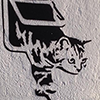-
Posts
53 -
Joined
-
Last visited
-
 BigRam reacted to a post in a topic:
Request for DDS export from Affinity Photo
BigRam reacted to a post in a topic:
Request for DDS export from Affinity Photo
-
 xicus reacted to a post in a topic:
Pen pressure not working with vector brush (1.7)
xicus reacted to a post in a topic:
Pen pressure not working with vector brush (1.7)
-
 Maracas reacted to a post in a topic:
Affinity Photo for Game Devs
Maracas reacted to a post in a topic:
Affinity Photo for Game Devs
-
 ThatVeryHooniz reacted to a post in a topic:
.DDS file support
ThatVeryHooniz reacted to a post in a topic:
.DDS file support
-
 mtbrkhrd reacted to a post in a topic:
.DDS file support
mtbrkhrd reacted to a post in a topic:
.DDS file support
-

.DDS file support
OlaHaldor replied to HeinzBBQ's topic in Feedback for the Affinity V2 Suite of Products
I'm back. Looking for DDS support in Photo V2. But no joy. 😧 Have anyone got the nVidia DDS plugin for Photoshop to work with Photo?- 46 replies
-
- file format
- .dds
-
(and 3 more)
Tagged with:
-
 Fab44 reacted to a post in a topic:
How do I properly work with alpha channels?!
Fab44 reacted to a post in a topic:
How do I properly work with alpha channels?!
-
 Fab44 reacted to a post in a topic:
How do I properly work with alpha channels?!
Fab44 reacted to a post in a topic:
How do I properly work with alpha channels?!
-
 moi.cool reacted to a post in a topic:
Workarounds for Distortion, Warp, or Perspective distort?
moi.cool reacted to a post in a topic:
Workarounds for Distortion, Warp, or Perspective distort?
-
 RickyO reacted to a post in a topic:
Polling for "Best Graphics Cards/Accelerators"
RickyO reacted to a post in a topic:
Polling for "Best Graphics Cards/Accelerators"
-
 Catshill reacted to a post in a topic:
Polling for "Best Graphics Cards/Accelerators"
Catshill reacted to a post in a topic:
Polling for "Best Graphics Cards/Accelerators"
-
True, to a degree.. It depends on a lot of factors; cooling and airflow in your case, and what cooling solution the card has. I have a Asus TUF RTX 3090, it is more quiet and about 15+ degrees cooler than my Gigabyte RTX 2080 Ti. It was a positive surprise to me. The 3090 is Noctua kind of quiet most of the time. Only in very extreme cases have I barely heard the fans ramp up to an audible level, yet far from annoying. The 2080 Ti on the other hand sounds like a jet is taking off.
- 50 replies
-
- graphics cards
- multi-monitors
- (and 5 more)
-
I just came here because I was looking for something like a simple arc transform/deform thing. I'm UV mapping a tire, and need a company logo - and for this to look correct I need to arc the logo to match the curve of the tyre.. Something this simple, not possible in Designer!? 🤪
- 241 replies
-
- distortion
- warp
-
(and 3 more)
Tagged with:
-
I have worked with video production for 15+ years, where the GPU has been the main component I've upgraded for the majority of this time, as I've worked mainly with Davinci Resolve. Any modern (gaming) graphics card will do the job for you. There is absolutely no need to burn your money on a Quadro. As everyone has pointed out, get a decent 'gaming' graphics card, and you're good to go. The only reason to go for Quadro is; you really need it. If you don't know if you need it, you most likely don't. you have too much money to spend. it will make you feel cool. Joke aside; RTX 2070, 2080, 2080 Ti, 3060, 3080, 3090 are all excellent for what they do. The RTX 3000-series will be very hard to come by these days though, especially for a price that makes them worth it. It's true, the more powerful card is usually faster when it comes to video production. There are other pitfalls though (storage speed and CPU speed especially) to take into consideration too. The 3090 won't necessarily spit out frames faster if the storage speed is slow. Is a Quadro faster? Depends on the model. For the price of one of the cheapest Quadro (which still is on par with the performance of at least RTX 2080), you could probably get two, if not more, RTX 2080 cards... Just saying; spend your money wisely.. Re 10-bit output (if that's a crucial thing for you), you could do 10-bit output already on GTX 1080. RTX-series is no different. You need a 10-bit display of course. As for video output to a dedicated video monitor, if you have one, that's a whole different thing; don't go through the GPU for that if you are working with color critical content. You want a clean signal out to monitor so you see the true image, not processed or compressed through the GPU output. Depending on the software you use, you may have to decide between AJA or Blackmagic Design. Since I'm using Davinci Resolve, Blackmagic Design's own hardware is what counts.
- 50 replies
-
- graphics cards
- multi-monitors
- (and 5 more)
-
Hi, I am on Designer 1.7.1.404 Pen pressure doesn't work with the vector brush. If I switch to pixel persona it works with the brush there. I'm at a loss of what to do. It should be intuitive and simple: More button -> select Pressure to drive Size variance. I have tried size variance at anything between 0% to 100% I have tried to enable and disable Windows Ink in the Wacom settings as well. Can anyone help me?
-

multi TGA export
OlaHaldor replied to OlaHaldor's topic in Feedback for Affinity Designer V1 on Desktop
While that is a workaround, it’s just that, a workaround, to a problem that shouldn’t be a problem at all. Besides, it’s not free. It adds a watermark to the image (according to their website at least), and the license is $30 or so. Could you imagine if we weren’t able to export PDF from Publisher, but could export to SVG, and had to find a third party solution to convert to PDF? It’s the same thing with TGA for us. It’s plain and simple a requirement for us. -
A photo library management tool/feature would be most welcome. I've previously used Bridge instead of Lightroom, I just didn't click with it. Bridge is really fast at what it does, and I'd love to see Affinity's take on something like it, and have it closely tied to Photo, where I could be able to copy-paste raw development settings from one photo to a bunch of others in a second.
-

How to change brush size with keyboard + mouse
OlaHaldor replied to jonasbg's topic in [ARCHIVE] Photo beta on macOS threads
I was about to reply “of course I do the keyboard keys first, then mouse button and drag”, but you revealed something now which I must try when I get back from work: I must click BOTH mouse buttons? If that’s the case, the manual is outright wrong, as it states only the right button. and I agree, if this is the magic combo it is VERY cumbersome! -

How to change brush size with keyboard + mouse
OlaHaldor replied to jonasbg's topic in [ARCHIVE] Photo beta on macOS threads
In the manual it says Decrease/increase brush width with on-screen readout -drag (left/right) Right mouse button press++drag (left/right) Decrease/increase brush hardness with on-screen readout -drag (up/down) Right mouse button press++drag (up/down) But it does not really work. I right-click and hold ALT, drag left/right. Nothing happens. Literally nothing happens. I'm on Windows. Photo 1.7.1.404 Can anyone confirm? Very annoying to always go to the toolbar to adjust the size. (yes I know there's a keyboard shortcut for increase/decrease but I'd much rather be able to just click-and-drag with the mouse for much faster workflow) -
Great, hope they figure out something. Or perhaps could team up with nVidia (and possibly AMD if it behaves the same with Freesync) to make G-sync switched OFF by default when you install a new driver, for this app specifically. I think it is possible in the nvidia control panel, all though I switched it off globally.
-
 OlaHaldor reacted to a post in a topic:
Poor performance with Threadripper
OlaHaldor reacted to a post in a topic:
Poor performance with Threadripper
-
After fiddling a lot with GPU drivers (creator vs gaming drivers and versions of those) G-sync was disabled by accident, and I noticed the lagging was gone. So after a bit more testing I found out that when G-sync is set to work with windowed mode too, it became an issue with Affinity. The reason I thought it was an Affinity problem especially, and with Threadripper is I had recently built a brand new computer, and Affinity were the only apps that had this issue. 3D, video, compositing and other photo apps have not had this lagging issue at all. I tried recording it, but in the videos it played fine, which also goes to tell that it was a G-sync issue, not Affinity directly. Conclusion: enable G-sync only for full screen mode.
-
Just to keep you updated; I did try 1.7, there was no difference. The mouse lags/stutters like crazy. It's like going from 60 fps to 20 or even 15 fps. If I click and drag to use a tool within the canvas, it improves a little bit, but a lot of the operation is within the layer window, the toolbox, going through menus for brushes, colors etc, not only the canvas.





